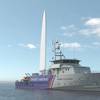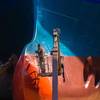Ocean Three Containership Alliance v the Rest: DMR Analysis
Last Tuesday’s announcement of the formation of the “Ocean Three” alliance – actually a combination of vessel sharing, slot exchange and slot charter agreements – confirmed one of the worst kept industry secrets. But what will be its impact on the competition? Drewry Maritime Research consider in this excerpt from their latest 'Container Insight Weekly''.
The coming together from late 2014 of CMA CGM with CSCL and UASC was widely anticipated after the decision in June of Maersk Line and MSC to jettison CMA CGM in their 10-year “2M” VSA that replaced the original P3 Network plan.
Having been left out in the cold by its erstwhile P3 partners, CMA CGM had to find new carriers to help fill its big ships and with virtually every other carrier already part of an alliance there were few alternatives available.
Despite sounding like a low-budget “Rat-Pack” movie (admittedly far better than the originally touted CUC Alliance brand), the Ocean Three agreement will cover the key East-West container trades out of Asia to and from North Europe, the Mediterranean and both coasts of North America, effective end 2014 or early next year.
Based on Drewry’s analysis of the service network supplied by CMA CGM, the Ocean Three will initially operate 15 weekly services using a total of 138 containerships. Discussions are also taking place to possibly extend the agreement to cover the Transatlantic trade, which if fruitful would mark new entry into the lane for both CSCL and UASC. Moreover, each carrier will continue to offer services outside of the agreement under existing service agreements with other carriers.
In terms of net changes from the three carriers’ existing service structures, essentially there is little change in the Asia-North Europe trade other than general vessel upgrades so that all four services will be tonnaged at a minimum of 14,000 teu average. For Asia-Mediterranean, the number of weekly services will come down to four from five, but again the average capacity of the remaining loops is expected to increase with the Black Sea service (BEX) for example being upgraded from 6,500-7000 teu to 9,400 teu.
In the Transpacific, the main changes will occur on the Asia-USEC lane with greater focus on the Suez routeing to allow bigger ships. We expect CMA CGM to transfer its 8 x 8,500 teu ships from the TP3/TP9/Columbus joint service it currently operates jointly with Maersk Line into the new Columbus Suez along with three additional units that could well be provided by CSCL and UASC from existing Asia-USWC ships of similar size.
CSCL’s and UASC’s existing Asia-USEC service AAE1/AUC1 deploying 10 x 4,250 units will be suspended with the ships either returned to owners or deployed elsewhere.
Ocean Three is subject to regulatory approval but they should have no problem as its current market share is less than 30% on all routes.
Drewry’s analysis shows that Ocean Three will have its largest share on the Asia- Mediterranean trade route with 27% share of all effective westbound vessel capacity, based on current service offerings of the three partner lines.
Charts reveal how much of the East-West routes are now completely locked down by alliances with virtually no room at all for independents. Therefore the Ocean Three can be seen as the last piece in the alliance jigsaw for the foreseeable future. This is not to say that there will be only four competitors left on these routes; each carrier will continue to compete against all other carriers inside and outside of its alliance.
The trend towards these so-called “mega-alliances” is a defensive response to the prolonged down cycle for industry profits, as carriers have realised there is safety in numbers. With little prospect for M&A among the major players, alliances are the half-way house towards consolidation that many in the industry believe is necessary to secure future profitability. However, with the game of musical chairs now over it could be that these mega-alliances actually set up a barrier to large-scale M&A as buying a rival from a different alliance could well increase the market share balance to unacceptable (at least to regulators) levels.
The mega-alliances are often reported as global in scope, but actually they are only the next stages in the evolution of alliances; from the early days of trade-specific groups such as Trio to the East-West focus of today’s VSAs. To properly go global and incorporate North-South routes is very unlikely in the near future in Drewry’s opinion as the same pressures do not apply in those trades.
In Drewry’s view, Ocean Three will have an extensive East-West network (although not quite as wide as 2M’s), a large share of the East-West markets, superior access to big-ship costs advantages and no apparent incompatibility between the schedule reliability objectives of its members.
Yet, ultimately the success of each alliance will depend on how these often disparate companies in terms of ownership structure, nationality and culture can operate together. How quickly they are able to react to market developments is also a significant factor. Having a single leader, like the fictional character Danny Ocean from the Ocean’s 11 movie franchise, to orchestrate operations, is preferable when needing to make quick decisions, hence why the P3 wanted to set-up a single independent operational centre. On the basis of the fewer the chiefs the better, 2M would appear best placed of the alliances, with Ocean Three not far behind.
Drewry's View
Ocean Three is the final piece in the “mega-alliance” jigsaw. Its success, like all other VSAs, will depend upon not only achieving the unit cost savings but also on how well the partners can work together.
Source: Drewry Maritime Research













